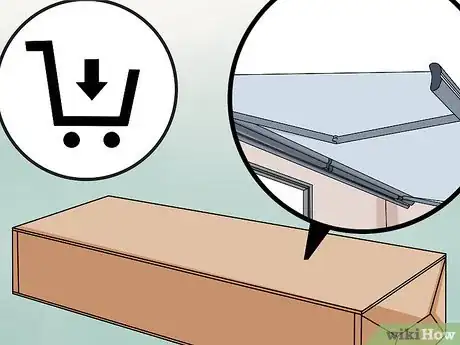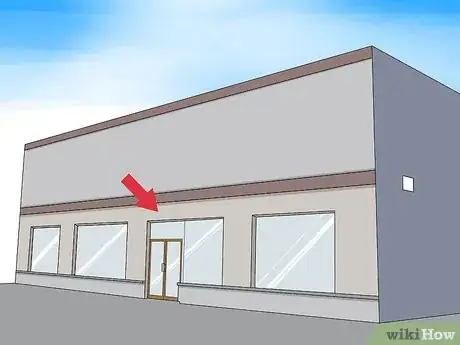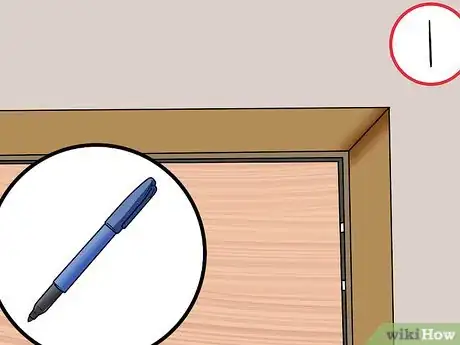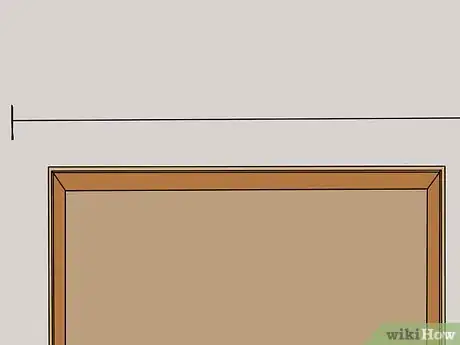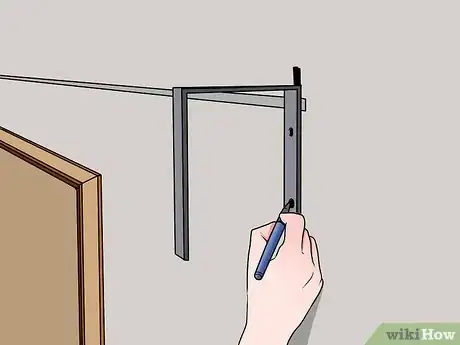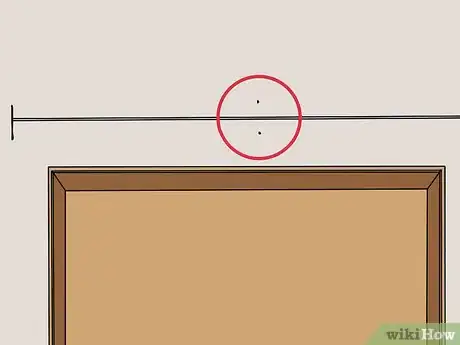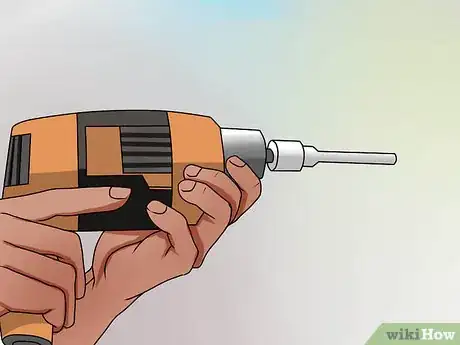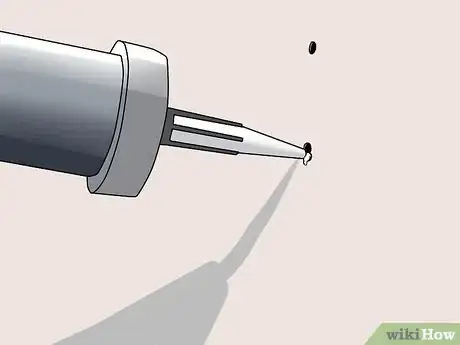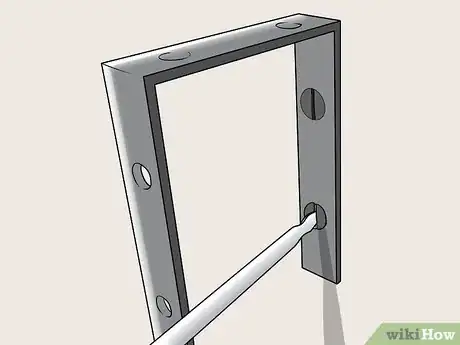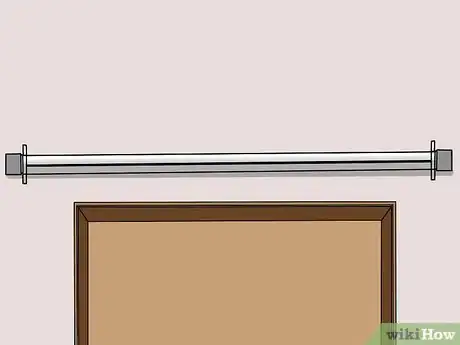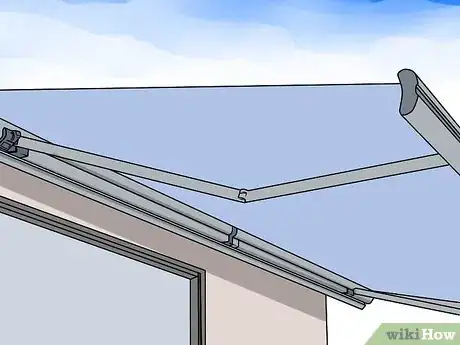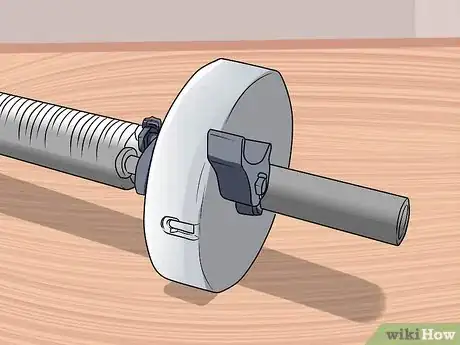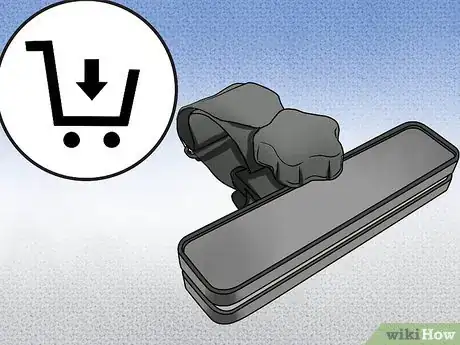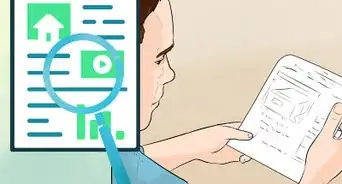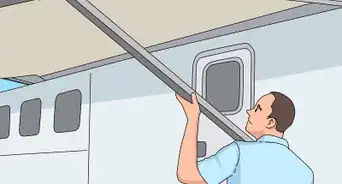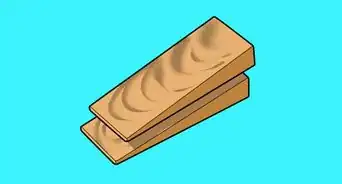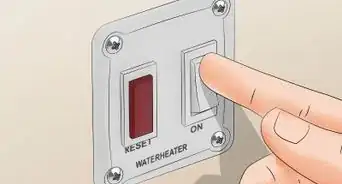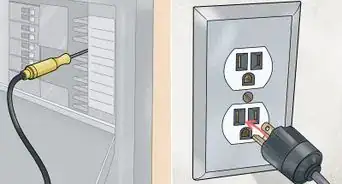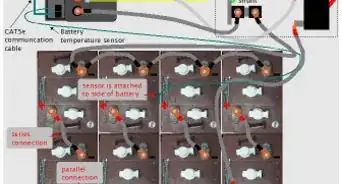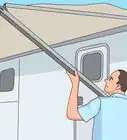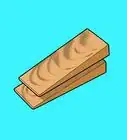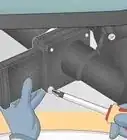This article was co-authored by wikiHow Staff. Our trained team of editors and researchers validate articles for accuracy and comprehensiveness. wikiHow's Content Management Team carefully monitors the work from our editorial staff to ensure that each article is backed by trusted research and meets our high quality standards.
This article has been viewed 42,805 times.
Learn more...
It can be difficult to find shade while using a camper. Installing an awning tends to be the quickest way to enjoy continuous protection from the sun when there is no natural shade to be found. Though you can have an awning professionally installed, it is a simple enough task that you might want to consider saving some money by doing it yourself.
Steps
Placing Your Camper Awning
-
1Purchase an awning kit. Most packages contain stainless steel mounting brackets, silver reflective material, and extra fiberglass poles to combat against the wind.
-
2Select a location for your awning. Though most awnings are placed on the front of the camper above the door, this is entirely up to you. You can put the awning on any wall of the camper that is long enough and thick enough. If you choose to put your awning on the backside of your camper, it will just mean that you have to walk around the camper to enjoy the shade.Advertisement
-
3Use a felt tip marker to mark where the ends of the awning will be. You can use a tape measurer to measure along your camper and find the best place for your awning. Make sure the walls of the camper are at least 1 inch (2.54 cm) thick in this area to ensure the camper is structurally strong enough to hold the weight of the awning. You can confirm this in your owner’s manual or measure the thickness of the wall in an opening such as doorway or window.[1]
- Another way to measure the wall thickness is to drill a screw all the way through and mark it on the other side of the wall. Pull the screw back out and measure from the head of the screw to the mark and that will be your wall thickness. Be wary of making extra holes in your camper, though.
-
4Draw a straight line between the two marks. It will help to have at least two helpers for this task. Have one person on either end holding either a chalk line or a straight edge of some kind. As they hold, snap the chalk line or trace a line down the straight edge.[2]
Installing the Mounting Hardware
-
1Place the two end mounting brackets approximately three inches inside the end marks. Use the felt tip marker to mark the hole on each bracket. This will mark where you need to drill later.[3]
-
2Place the third mounting bracket directly in the middle of the chalk line. Again, use your felt tip marker to make a mark for drilling. You can find the middle by measuring the distance from one point to the next and making a mark, at the halfway point. For example, if it’s ten feet from mark to mark, you would mark the five foot point as your middle.[4] You can then set the brackets aside for now.
-
3Drill holes for the mounting bracket screws. Use the drill bit size recommended in the awning manufacturer’s instructions, as different awnings may require slightly different sized screws. Drill straight through the holes you previously marked.[5]
- Most of the time you will use a 3/16 drill bit for these holes.[6]
-
4Coat the provided screws in a water-tight sealant. Use a sealant such as silicone. This will seal the hole around the screws and prevent water from entering your camper.[7]
-
5
Installing the Camper Awning
-
1Hang the camper awning over the mounting brackets. You will need to slide the attachment hooks on the brackets into the awning. This will secure the awning to the brackets.[10]
-
2
-
3Make torsion adjustments. Torsion adjustments can usually be made with a knob located at the side of the awning. This will adjust how tightly the awning is stretched while extended.[13]
-
4Consider purchasing a “deflapper.” This part will be installed halfway down the awning and will reduce flapping. This will increase the longevity of your awning by preventing wear and tear due to flapping.[14]
-
5Skew your awning slightly. As long as one end is slightly higher than the other, the awning will be pitched. This will allow any water to flow off to one side rather than be stagnant on the top of your awning.[15]
Community Q&A
-
QuestionHow do I replace the right awning arm on a dometic model 9400 RV awning?
 CamparamaCommunity AnswerThere is a spring in the roller and if you inadvertently loosen it you will have more damage and a great potential for injury to yourself. Take it to your local RV specialist.
CamparamaCommunity AnswerThere is a spring in the roller and if you inadvertently loosen it you will have more damage and a great potential for injury to yourself. Take it to your local RV specialist.
Warnings
- Do not use a power screwdriver to attach the screws. This will over-torque them and make the awning structure weaker.⧼thumbs_response⧽
- If you find that your camper's walls are too thin to support the awning structure, use the provided backing plate or a .25-inch (0.6 cm) thick steel plate and drill holes with a carbide bit drill. You can also use bolts instead of screws to make the awning more secure.[16]⧼thumbs_response⧽
Things You'll Need
- Camper or RV
- Awning and Installation Hardware
- Drill and Drill Bits
- Screwdriver
- Tape Measurer
- Felt Tip Marker
- Chalk Line or Straight Edge
References
- ↑ https://www.trails.com/how_11117_install-rv-awning.html
- ↑ https://www.trails.com/how_11117_install-rv-awning.html
- ↑ https://www.trails.com/how_11117_install-rv-awning.html
- ↑ https://www.trails.com/how_11117_install-rv-awning.html
- ↑ https://www.trails.com/how_11117_install-rv-awning.html
- ↑ https://www.trails.com/how_11117_install-rv-awning.html
- ↑ https://www.youtube.com/watch?v=ZfpM-op0dkU
- ↑ https://www.trails.com/how_11117_install-rv-awning.html
- ↑ http://camping.lovetoknow.com/How_to_Install_an_RV_Awning_Yourself
- ↑ https://www.trails.com/how_11117_install-rv-awning.html
- ↑ https://www.trails.com/how_11117_install-rv-awning.html
- ↑ http://camping.lovetoknow.com/How_to_Install_an_RV_Awning_Yourself
- ↑ http://camping.lovetoknow.com/How_to_Install_an_RV_Awning_Yourself
- ↑ http://camping.lovetoknow.com/How_to_Install_an_RV_Awning_Yourself
- ↑ http://camping.lovetoknow.com/How_to_Install_an_RV_Awning_Yourself
- ↑ https://www.trails.com/how_11117_install-rv-awning.html
